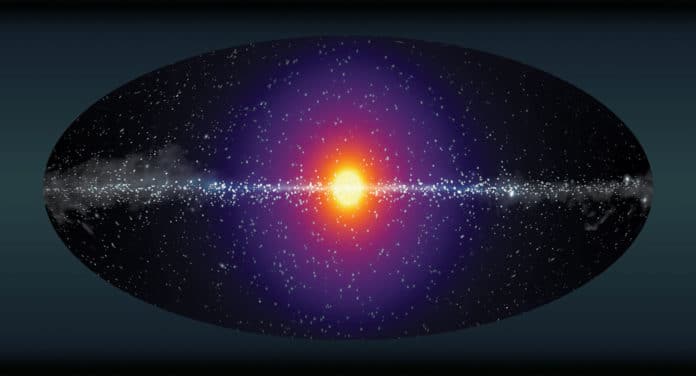Scientists cannot directly observe dark matter, but they know it exists by the way it exerts a gravitational pull on other matter. Dark Matter is essential to explain gravitational forces that hold galaxies together.
Many studies have suggested that dark matter is the relative to the neutrino, called the sterile neutrino. The sterile neutrino is a hypothetical particle, could account for this mass and also be dark matter.
Now, a meta-analysis of raw data taken by the XMM-Newton space X-ray telescope of objects in the Milky Way over 20 years has found no evidence that the sterile neutrino is what comprises dark matter.
Ben Safdi, co-author and an assistant professor of physics at U-M said, “This 2014 paper and follow-up works confirmed the signal generated a significant amount of interest in the astrophysics and particle physics communities because of the possibility of knowing, for the first time, precisely what dark matter is at a microscopic level. Our finding does not mean that the dark matter is not a sterile neutrino, but it means that—contrary to what was claimed in 2014—there is no experimental evidence to-date that points towards its existence.”
Telescopes like XMM-Newton telescope looks for dark-matter-rich environments to search for this faint electromagnetic radiation in the form of X-ray signals. The 2014 discovery named the X-ray emission the “3.5 keV line”—keV stands for kilo-electronvolts—because of where the signal appeared on X-ray detectors.
Safdi said, “we searched for this line in our own Milky Way using 20 years of archival data taken by the XMM-Newton space X-ray telescope. Physicists know dark matter collects around galaxies, so when previous analyses looked at nearby galaxies and galaxy clusters, each of those images would have captured some column of the Milky Way dark matter halo.”
“The team used those images to look at the “darkest” part of the Milky Way. This significantly improved the sensitivity of previous analyses looking for sterile neutrino dark matter.”
Nicholas Rodd, a physicist with the Berkley Lab theory group and the Berkley Center for Theoretical Physics, said, “Everywhere we look, there should be some flux of dark matter from the Milky Way halo, because of our solar system’s location in the galaxy. We exploited the fact that we live in a halo of dark matter.”
Christopher Dessert, a study co-author who is a physics researcher and Ph.D. student at U-M, said galaxy clusters where the 3.5 keV line have been observed also have significant background signals, which serve as noise in observations and can make it difficult to pinpoint specific signals that may be associated with dark matter.
Using images of isolated objects like individual stars in Milky Way, taken from XMM-Newton, scientists masked the objects of primary interest, leaving pristine and dark environments in which to search for the glow of dark matter decay. Combining 20 years of such observations allowed for a probe of sterile neutrino dark matter to unprecedented levels.
Scientists did not found evidence for sterile neutrino dark matter.
Safdi said, “While this work does, unfortunately, throw cold water on what looked like what might have been the first evidence for the microscopic nature of dark matter, it does open up a whole new approach to looking for dark matter which could lead to a discovery shortly.”
The study was conducted by the University of Michigan, Lawrence Berkeley National Laboratory (Berkeley Lab), and the University of California, Berkeley.
Journal Reference:
- The dark matter interpretation of the 3.5-keV line is inconsistent with blank-sky observations. DOI: 10.1126/science.aaw3772
